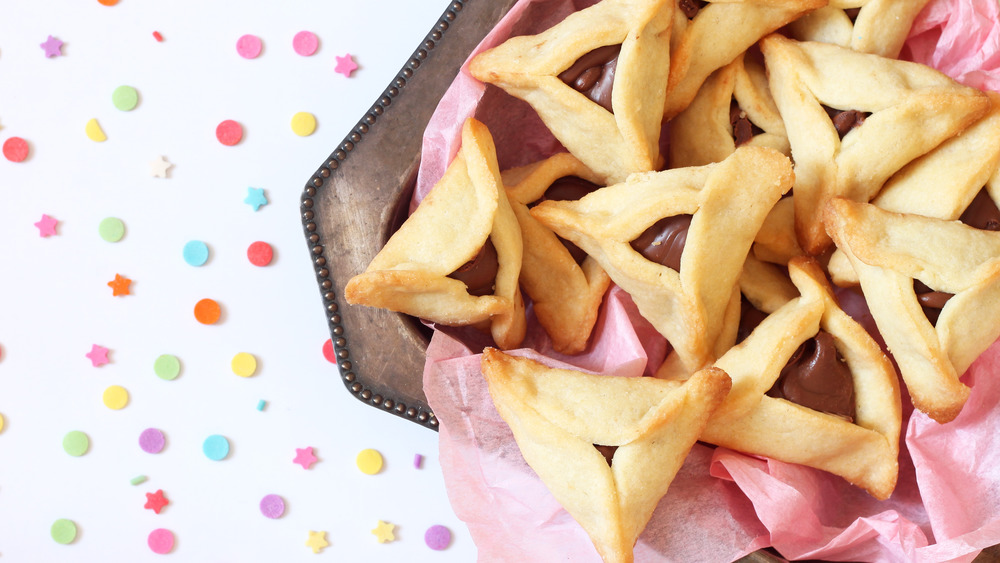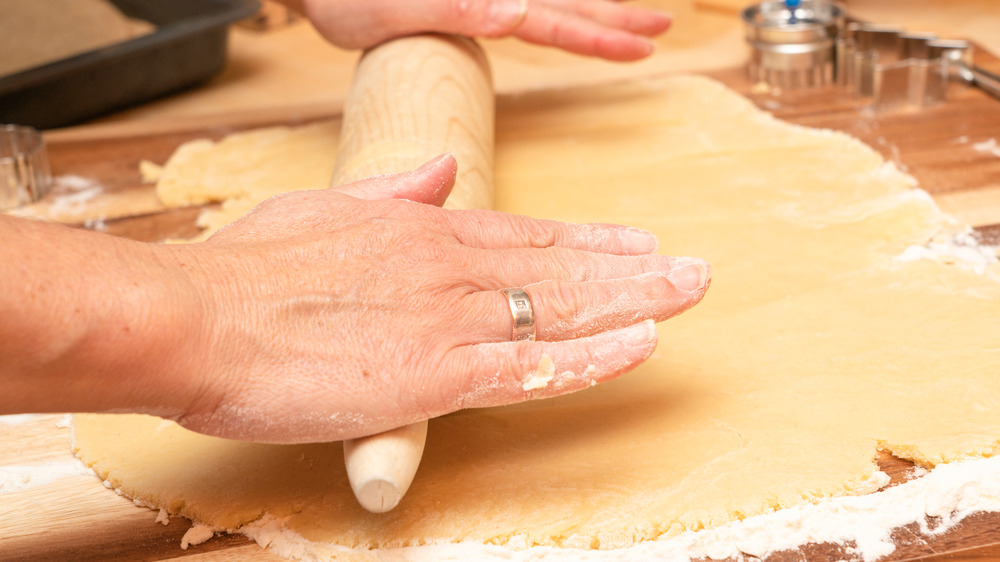The Biggest Mistake You're Making With Hamantaschen
It's Purim time once again, and Jews of all ages are getting psyched — Jewish kids, because they get the opportunity to dress up like their favorite Purim story characters (kind of like a Jewish Halloween, via Time, although not all Jews would agree), and Jews of all ages who love baked goods, because it's the time of year when eating jam-filled pastries called hamantaschen is considered a mitzvah (a good deed), via Chabad.org.
Hamantaschen is Hebrew for "Haman's pockets" (via My Jewish Learning's The Nosher). Haman was the villain in the Biblical story that gave rise to the two-day festival of Purim that's celebrated every year in late winter/early spring — on whatever day corresponds with the 14th day of the month of Adar on the Hebrew calendar. (In 2021, it begins Thursday, February 25, per My Jewish Learning.) Specifically, Haman was plotting to "destroy, kill and annihilate all the Jews, young and old, infants and women, in a single day," according to Chabad.org. Fortunately, Queen Esther of Persia foiled that plot (via Time).
Hamantaschen are sugar cookies shaped into triangle-shaped pockets (to look like the tri-corner hat Haman wore) and filled with something delicious (usually raspberry jam, apricot jam, or poppy seed paste, although lately we've been hearing about novel takes like filling the pockets with pulled beef or Greek yogurt, via Kosher.com). They're yummy and fairly easy to make, as long as you avoid the biggest mistake almost everyone makes the first time they make hamantaschen.
The biggest mistake you're making with hamantaschan might surprise you
There's a school of thought that says the biggest mistake you're making with hamantaschen is not having a sense of humor about it. First the notion of "naming a pastry after someone wicked" is actually intended to be funny, according to Rabbi Cheryl Peretz (via Time). Second, the hamantaschen tend to overflow while baking if you don't prep the dough with precision (via My Jewish Learning's The Nosher). And then, of course, it's hard to bake "with precision" when you're wearing a costume and enjoying a glass of wine, as Jews are encouraged to do on Purim.
So with all of that in mind, let's address the aforementioned precision required to keep the filling in those little hats. According to Kosher.com Community Chef, Faigy Akda, if you don't want your dough to crack (which obviously will lead to spills), you don't want to start out with cold dough. So exercise a little patience and let the dough fully come to room temperature before you start playing with it. In addition, if you roll out the dough unevenly, you're asking for the filling to spill through the thin spots during baking. To circumvent this problem, it helps to use a tapered rolling pin like the one shown above. And to keep the dough at just the right thickness, consider using rolling pin rings, which prevent you from stretching the dough too thin.

